The modern world is a dangerous place. We try our best to be safe, from the risks of doing anything dangerous like playing sports, shopping at the mall, or even just walking to the mailbox for fear of getting robbed. The risk we take often doesn’t seem worth it because the crime rates are high and security cameras are there for us.
Depending on how you look at it, that can be good or bad – more people are caught due to security cameras and security guards than ever before. In the past, this has not been the case and there is a fear that the future may indeed be a less safe place.
Security cameras are a vital part of the security system that we have in place to protect us. We will always try that they are not always easy to spot and they are there to catch the bad guys.
Steps To Hide Security Camera Wires Outside
Quick Navigation
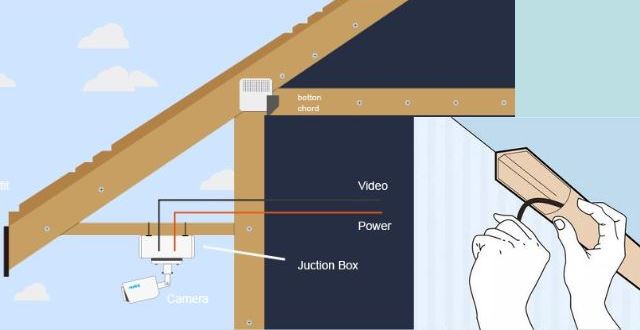
There can be various ways to hide security camera wires outside. As security systems at home are now a priority, we need to save them from every possible threat, whether it’s weather conditions or a burglar. Here, we are going to learn about every possible way to hide security cameras.
1. Shade The Wires To Match The Walls
Shading the cables with paint will be one of such easiest ways to hide your cameras. Paint the cables running through walls with the color of your wall and blend it with the environment. You will then be able to repaint over top of this hole and no one will be able to tell that there is a security camera capturing everything.
2. Plastic Tubing For The Wires
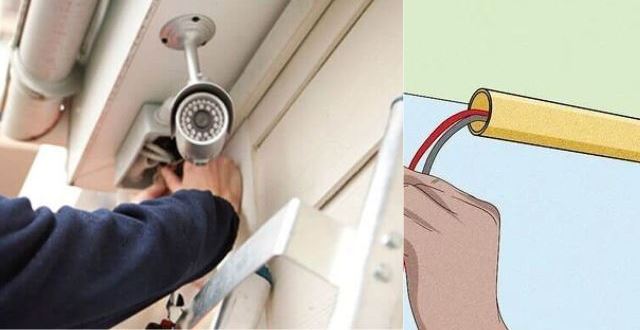
If you’re thinking of buying a security camera but are worried about how easy it is for intruders to find and rip out the wires. The answer to your dilemma might be hiding in your basement or garage. Plastic tubing is one of those inexpensive items that can help solve this problem. It’s used in construction projects to control wiring, and can also keep your wires safe from prying eyes.
Tools:
- Paint
- Plastic tubes
- Drill machine to make holes
- Baseboards
- Wire-less cameras
Materials: NA
Depending on the size of your house and the number of hidden security cameras you want to hide, will determine how much tubing you buy.
- If purchased in long lengths, the tubing can be easily cut with a pair of wire cutters or an electric knife. It’s also easier to work with smaller pieces are cut off.
- A box cutter can be used to make slices or holes in the tubing. Slice it lengthwise and you’ll have a pipe to run wires through.
- Try to use tubing with a diameter that’s at least half the size of the wire you want to hide. This will make it easier for the wire to fit inside and remain hidden from view.
- It will also be more secure and less likely for kids or pets to pull out your wires used to make slits in the tubing to accommodate the wires running through it
Hide The Wires Inside The False Ceiling.
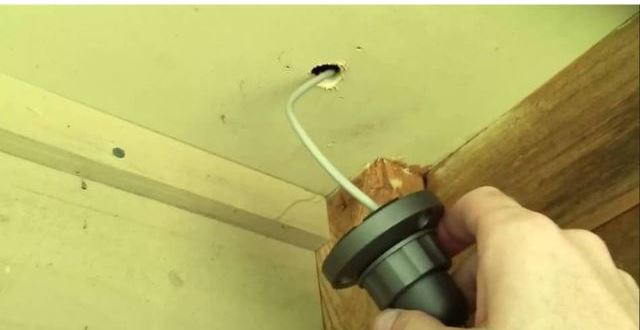
A hidden wiring system is an easy way to hide wires in the walls without damaging other surfaces or fully removing the ceiling.
To install a hidden wiring system:
- You will start by installing a cut-out or template onto the ceiling.
- The cut-out must be designed and sized to fit a specific size of wires used by your home’s lighting fixture
- The cut-out will be installed directly over your false ceiling and then concealed from view.
- Hidden behind a false ceiling is the ideal place to put wires or electrical components.
- It is simple to install, and the ceiling hides any trace of its existence.
- The installation process involves a few steps, but it doesn’t require a lot of money or drastic changes.
Inter The Cables Inside Your Porch Or Garden.
Want to keep your security cameras and CCTV wiring from view? Here is a way. Hide by running the cables through a garden hose.
The steps of doing this are:
- Cut the hose to the desired length.
- Run the cable through one end of the hose and out of another.
- Try to bring the free end of the cut hose over to a rain fixture or any other water source, and cover it with your palm or finger.
- Now, slowly turn on the water from the fixture so that it fills up inside the tube until the entire stretch of the cable has been covered in water and is soaked through until there are no exposed wires.
- Tape up the end of the garden hose, and water will not leak.
- Congratulations, your job is done!
It is that simple! Once you have done this, you can run your security camera wire without fear of tripping into a hidden wire. This is perfect for hiding security cameras in a flower box or behind plants.
Build A Cable Run Through The Building.
Firstly, plan a good strategy for your cables and run, then, calculate square footage
Steps:
- Drill a hole in the ceiling through which you will run your cable.
- Drill 4 holes into the wall in a rectangle around 6 inches from the ceiling.
- Before mounting your camera, cut out a piece of insulation from one of the walls, 3 inches by 9 inches, then mount your camera on it and drill two holes for securing it to the wall with screws.
- Run your cable up through one of these newly drilled holes and down into another newly drilled hole that is 2 feet off ground level (so that you may observe what is going on outside).
- Run it down again through one of the newly drilled holes and up through another newly drilled hole to the ceiling.
- Tape carefully all cables you have run to neatly cover them with some cable sheathing such as duct tape or whatever is available.
How To Hide Outside The House?

Steps to hide your security camera wires outside are:
A. Drill Holes
You can hide the wires by drilling a hole in the wall just above where you want to run the wire and running it through the hole.
B. Baseboards
They are the narrow wooden boards that run along the lower region of the wall.
You have to remove the baseboards and fit the cables in the gap between the wall and the floor and then, make sure the wires are in place and put the baseboards back.
C. Repaint The Hole
You will then be able to repaint over top of this hole and no one will be able to tell that there is a security camera capturing everything. You can also paint the wire the same colour as the wall and blend it to the environment.
D. Plastic Tubes
Another effective method is feeding the cables through walls in a plastic tube, which not only hides the wires but also protects the cables from harsh weather conditions and external damages.
E. Installation Of A Wireless Camera
Installing a wireless camera can provide ease and free you from messy cables and hiding.
Is It Unsafe Not To Hide Security Wires?
There are 3 basic reasons to prove how it is unsafe:
a. Accidental fall: When you have cables hanging around your house, it’s easy to trip over them. This is even more likely if the wires are loosely tied together with a simple twist-tie. For many, this leads to a fall and possible injuries right in the privacy of their homes.
b. Home invasion: Home invaders know that wiring can lead them to valuable items such as jewelry, electronics, and other valuables that people might store away in their homes. A security system can only do so much in alerting homeowners that there are intruders, so it’s best to try to hide those cables as best as possible
How Do I Protect My Security Camera Wires?
We definitely would want our security camera to be protected from harsh weather conditions as well as from people who are going to break through our house.
- Consider running your wires inside a metal conduit or metal-clad wire such as Romex.
- Use metal wire clamps to secure the wires to the conduit or Romex, and then fill the remaining space with an electrical sealant like silicone cement or plaster of Paris.
- Place galvanized steel cable protectors on top of the wires at intervals that correspond to what you would put in a sidewalk if it were made out of sticks (i.e., every three feet).
- Use plastic-coated wire ties.
- Use a rubber gasket to seal the conduit or Romex around the wires.
- Cover all your wires with a jacket of white electrical tape (at least three feet of it!).
- Cover all the joints with foil tape to prevent any unwanted RF leakage.
- Consider using extra lengths of PVC pipe or wooden dowels with an electrical insulator on the bottom to reinforce the wiring.
- Plug your camera into a wall socket and match the colours of your wires to those on the power cord for yourself an easy way of knowing whether your’s camera and video communication system is “in” or “out”. Do this by matching your wires to a sine wave signal such as that coming out of your wall socket’s power cord. Make sure you install a good sign wave inverter at your place.
- If you have more than one camera, give them all different colours (no two cameras should ever have the same colour).
- Use a phone line with a phone jack that is always in the “on” position.
- Use a cable with LED lights on it, or use an LED panel, so that you can see the state of your cameras at night.
- Consider running your wires inside of cheap plastic tubing from the hardware store and then securing the wire inside with duct tape (which doesn’t conduct electricity).
- Use electrical conduit to protect your camera wires from harm and to guide them through walls or over obstacles to their destination.
- Use tabs for phones instead of extension cords for video communications systems as an alternative to running extra wires from your phone outlets to your cameras.
Final Talk
In these more modern times, home security systems are more important than ever. Even homes with alarms aren’t fully protected from intruders since a burglar can easily render that alarm useless by cutting the connections or even just unplugging them. If you feel that wires are too much work, you can prefer a wireless security camera under your budget.
A home security system is only as good as its connection to the outside world; many of today’s burglars will go after homes with vulnerabilities such as exposed wiring! Even if your wires aren’t visible on the outside, they’re very visible on the inside by someone willing to look for them

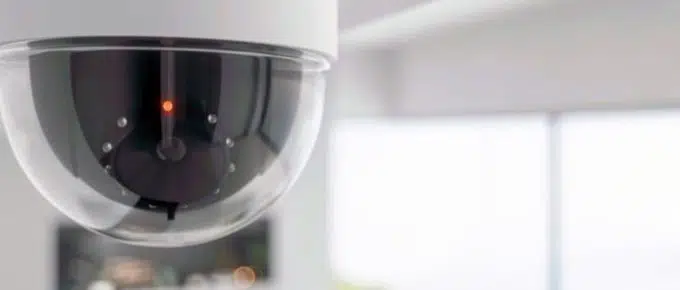
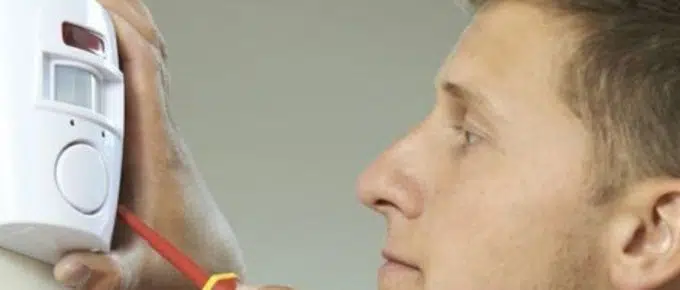
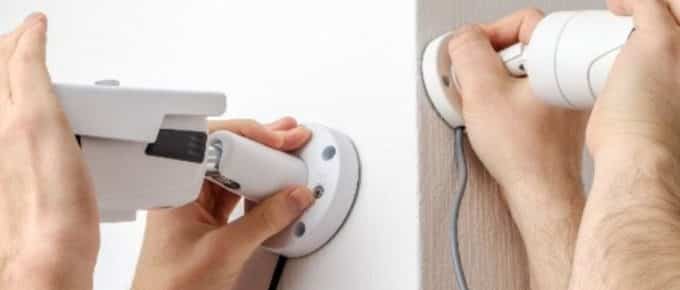

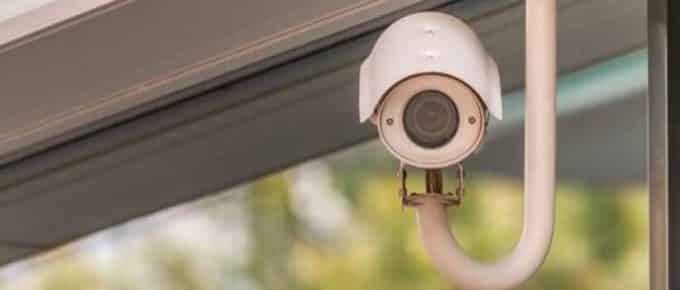
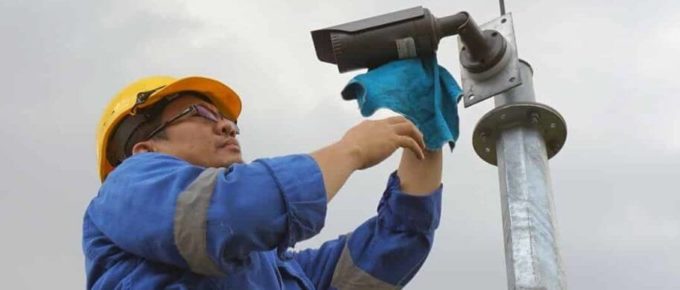
Leave a Reply